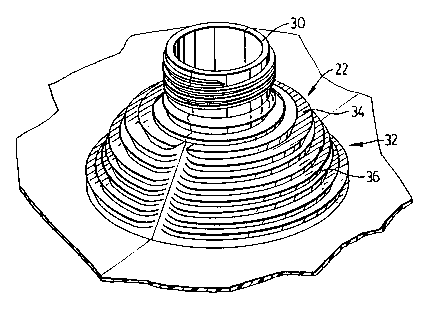Some of the information on this Web page has been provided by external sources. The Government of Canada is not responsible for the accuracy, reliability or currency of the information supplied by external sources. Users wishing to rely upon this information should consult directly with the source of the information. Content provided by external sources is not subject to official languages, privacy and accessibility requirements.
Any discrepancies in the text and image of the Claims and Abstract are due to differing posting times. Text of the Claims and Abstract are posted:
| (12) Patent: | (11) CA 2066315 |
|---|---|
| (54) English Title: | COLLAPSIBLE BOTTLE SPOUT |
| (54) French Title: | GOULOT DE BOUTEILLE SOUPLE |
| Status: | Expired and beyond the Period of Reversal |
| (51) International Patent Classification (IPC): |
|
|---|---|
| (72) Inventors : |
|
| (73) Owners : |
|
| (71) Applicants : |
|
| (74) Agent: | OSLER, HOSKIN & HARCOURT LLP |
| (74) Associate agent: | |
| (45) Issued: | 1995-07-18 |
| (22) Filed Date: | 1992-04-16 |
| (41) Open to Public Inspection: | 1992-11-07 |
| Examination requested: | 1993-01-11 |
| Availability of licence: | N/A |
| Dedicated to the Public: | N/A |
| (25) Language of filing: | English |
| Patent Cooperation Treaty (PCT): | No |
|---|
| (30) Application Priority Data: | ||||||
|---|---|---|---|---|---|---|
|
Note: Claims are shown in the official language in which they were submitted.
Note: Descriptions are shown in the official language in which they were submitted.

2024-08-01:As part of the Next Generation Patents (NGP) transition, the Canadian Patents Database (CPD) now contains a more detailed Event History, which replicates the Event Log of our new back-office solution.
Please note that "Inactive:" events refers to events no longer in use in our new back-office solution.
For a clearer understanding of the status of the application/patent presented on this page, the site Disclaimer , as well as the definitions for Patent , Event History , Maintenance Fee and Payment History should be consulted.
| Description | Date |
|---|---|
| Time Limit for Reversal Expired | 2006-04-18 |
| Inactive: IPC from MCD | 2006-03-11 |
| Letter Sent | 2005-04-18 |
| Inactive: Late MF processed | 2005-02-02 |
| Letter Sent | 2004-04-16 |
| Letter Sent | 2001-07-11 |
| Letter Sent | 2001-07-11 |
| Inactive: Adhoc Request Documented | 1998-04-16 |
| Letter Sent | 1997-04-16 |
| Grant by Issuance | 1995-07-18 |
| All Requirements for Examination Determined Compliant | 1993-01-11 |
| Request for Examination Requirements Determined Compliant | 1993-01-11 |
| Application Published (Open to Public Inspection) | 1992-11-07 |
There is no abandonment history.
| Fee Type | Anniversary Year | Due Date | Paid Date |
|---|---|---|---|
| MF (patent, 6th anniv.) - standard | 1998-04-16 | 1998-04-14 | |
| MF (patent, 7th anniv.) - standard | 1999-04-16 | 1999-04-12 | |
| MF (patent, 8th anniv.) - standard | 2000-04-17 | 2000-04-17 | |
| MF (patent, 9th anniv.) - standard | 2001-04-16 | 2001-03-30 | |
| Registration of a document | 2001-04-16 | ||
| MF (patent, 10th anniv.) - standard | 2002-04-16 | 2002-04-10 | |
| MF (patent, 11th anniv.) - standard | 2003-04-16 | 2003-04-09 | |
| MF (patent, 12th anniv.) - standard | 2004-04-16 | 2005-02-02 | |
| Reversal of deemed expiry | 2004-04-16 | 2005-02-02 |
Note: Records showing the ownership history in alphabetical order.
| Current Owners on Record |
|---|
| RELIANCE PRODUCTS LIMITED PARTNERSHIP |
| Past Owners on Record |
|---|
| PETER A. HAMM |